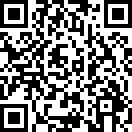
The book's cover
Journalist Stefano Pasta currently holds a Research Grant at CREMIT (Research Center on Education for Media in Information and Technology), directed by Pier Cesare Rivoltella, and works with the Centro di ricerca sulle relazioni interculturali (Research Center on Intercultural Relations), run by Milena Santerini – both of the Catholic University of Sacred Heart of Milan. With him we have talked about his new book "Razzismi 2.0. Analisi socio-educativa dell’odio online", published by Morcelliana, Scholé. This is what he told us.
“Racisms 2.0”, why this title, and why did you use the plural form?
I would say for two reasons. First, the racist performances vary and can assume different forms. Secondly, and this reason is linked to the former, in order to devise effective educational responses in the sign of racism prevention, it is pivotal to understand which kind of racism we are dealing with. And this thesis, which has long been handed down to us by our seminal studies, takes on a particular importance in the Web. Saying the forms of racism differ from each other, does not mean diminishing the importing of some forms of racism and incorrect speaking, which we might simply declassify to “less serious”. Such attitudes are nonetheless linked to each other, and they all tend to the normalization the racist discourse and the acceptance of hate speech.
During my research, I have willingly analyzed cases of differing racist performances. Not only the most extreme ones – which are also addressed in Italy by the legal order, in particular the Mancino Law, rarely applied to the Web – but also those in which the response is purely educational: from the anti-Semitic joke, to those who kid by calling the others “Pakistani terrorists” … all cases in which the problem is not so much, or not only, ideological, but is also given by a way of staying and communicating in the Web, which is deprived of any responsibility.
One of the book theses is that racisms 2.0 should be considered, in many cases, within the range of what Marc Prensky calls cyber stupidity, i.e. the fact of staying on the Web without thinking of the consequences of one’s deeds. I chatted with a lot of youths who have been the protagonists, in various capacities, of racist performances: the Islamophobe, the anti-Semite, and so on. I tried to ask them for the reason of their behavior. Many did not even remember the episode, they got surprised by the fact that I had found that information: on the contrary – as it is well-known – what is written in the Web has precisely the feature of being undeletable. Their reply was almost always: “But I was joking, don’t take me for serious”, maybe in reference to a post in which they had incited an act of genocide against a minority, or other very serious acts. In this case we should teach them to take themselves seriously, and evaluating the consequences: the virtual is real. Thus a space, in which we must not allow ourselves “not to take for serious” what we say.
In your book you mention the need to develop responsibility in the mediapolis. How can we convey the importance of expressing ourselves responsibly through media that are mistakenly considered as a “harmless outlet”, above all in a moment, in which also the very journalists and institutions sometimes underestimate the power of hate speech?
You touched on a key topic in the debate about racisms. To say it with a slogan, we should educate everybody, particularly young people, to pass from being bystanders to be rescuers. Recent research, in fact, shows us that youths recognize hate speech but fail to act. And it is precisely here, in the grey area, which the Web tends to expand, where it is crucial to step in.
As far as the education to information, in fact, in the face of the digital technologies we could divide ourselves between apocalyptic and futurists, those who are a priori in favor of them, and those who are against them. Actually, there is little to discuss. The digital world is a part of our lives. I deliberately quoted Apocalypse postponed by Umberto Eco – who in 1964 referred to the rise of another medium, TV – because the underlying debate has not changed. There is a big difference though: in the television society the point is educating people to critical thinking about the news. In the Web, this is still essential, but, furthermore, any of us becomes a producer of news. In this sense, for instance, a picture posted on Facebook that becomes viral can generate e hate campaign. All of us thus create information, but not all of us have passed the exam to become professional journalists. I do not want to say that journalists are perfect – and the issue of fake news prove they are not – but in society 2.0 the potential for producing news has increased, and this feature can be both positive and negative, according to the kind of actions it triggers.
The Ministry of Education, at the beginning of 2018, issued the Syllabus on the digital civic education, made of 5 areas. One of these is precisely education to information and “critical thinking” and “responsibility” are the keywords of the entire Syllabus. This document – which also the CREMIT Director Pier Cesare Rivoltella, with whom I conducted the study I talk about in my book – poses some very interesting bases. In the book, in fact, in reference to the Syllabus, there are various proposals on what teachers, educators and parents can do. The theme of education is the key to respond to this challenge, in a way, which cannot be only disciplinary or repressive. Of course, the legal response is necessary, but it cannot suffice, also because different legal systems come into play in the Web. In the USA, for example, the fascist party, the Ku Klux Klan and the Nazi party are cultural associations and Facebook, Twitter, Google and Youtube are based there. Also when a relevant legislation is in place, moreover, the problem cannot always be fixed. This is the case of the Mancino Law, de facto unapplied in the Web. In this regard, I really agree with the proposal by Liliana Segre, presented in the Senate, to set up a commission that deal with these themes and counter online hate speech.
How much racism is there in the rhetoric of “some cultures are incompatible by nature”? How do you view the danger that racism can assume a politically correct form, hidden behind the mask of the culture of origin, without even the need to use the words “race” or “biology”? and what is the relation between this and the resurfacing of fascisms and nationalisms?
First of all, we must consider the features of the digital system, which make it easy to spread hate, from the 2.0 speed to the breadth of the diffusion, from emotional analphabetism to the wish to conform. Then, we must analyze how the content of the racist discourse changes in our current society. It is not automatically said that nationalism coincides with racism, but of course the ethnocentric apologias of the societies of resentment provide a very fertile ground for the hate thoughts. All the “prejudiced” and discriminatory thoughts need to be fought against: often, anti-Semitism comes with Islamophobia, or the sexist discourse combines with the xenophobic one and so on. In the whole first half of the Twentieth Century, racism was marked by the biological pretense: the superiority of the white man on the black one, the genetic proximity between the African man and the chimp. In the second half of the century, instead, the biological pretense did not disappear, but it became less important, and the predominant issue became the so called culturalist or differentialist racism, latent or implicit. The racist rhetoric started being built on a cultural basis: “Muslims are too different from us and thus we cannot live together”, “Jews have so distant cultural values, that maybe they kind of deserved their fate. Such pretence is there also today, and it is precisely that connection ring between the thoughts of resentment – which then become both political speeches and bar talk – and incitement to hate.
In the Web, though, something new has happened: the “return of the race” on bases, which are no more the old “scientific” ones. Let’s take for example a meme that links Balotelli or former Minister Kyenge to a monkey: nobody really believes that two black people are close relatives of the chimps, but we are in the face of a return to the most basic pretence of biological racism, emptied of any scientific credibility. Such way of speaking and acting has contributed to the rupture of some social taboos. Racist words and thoughts have been normalized, some thoughts that had been banished are back, with the pretence of not being taken for serious. In this sense, I absolutely agree with senator Liliana Segre when she speaks of “fascistization of common sense”; from the testimony of the senator we have learned how indifference can enable the worst things, even the absolute Evil of the Holocaust.
Precisely regarding this underestimate, in Myanmar, the Burmese military has used Facebook for a campaign that incited to commit genocide against the Rohingya. Do you think we can be right to believe that, without an adequate moderation, the social media could be used to trigger new genocidal crimes?
The history of the most typical and organized forms of hatred has taught us that the media are always an excellent ally in this sense – think of the cinematographic images of the Nazi parades or radio machete in Rwanda in 1994. Today, not only we all use the social networks, but, as I said before, we are news producers. We have at our disposal a means that can both be a freedom instrument and a means of repression and control. The solution is to abandon our a priori views: the Web is not necessarily free, whether it is depends on the use we make of it.
There have also been cases opposite to the one of the Rohyngias that you mentioned, such as for example the use of Twitter during the protests in Iran of some years ago or of the social networks during the Arab Springs. We must not afford any longer to consider Internet as a space alternative to real life. The Web is another reality: a space of augmented reality. Believing that the true things are offline and the carefree things are online, has left room, in my opinion, to a dangerous intuitive hindsight: in the Web you can let yourself go, free yourself of inhibitions. Sometimes we even hear of the “digital natives” – a word that was belied by its very author, Marc Prensky. That term, which used to indicate the difference between the “Internet-savvy” an those who were not, did not depend on education but on age. Adults were thus the “digital immigrants”, those who had partly learnt to use it: digital skills were measured on essentially technical bases. This idea is actually belied by the reality. A child who, at age 3, already knows how to unblock an Ipad, does not necessarily know how to face communication on the Web. Digital skills are not only a matter of computer science, but also the fruit of education. The Syllabus of the Ministry I mentioned before absolutely changes the approach from this point of view: to have digital skills we need to educate people to responsibility, it means teaching how to assess who are the authors of a source, how you recognize a fake news, how you communicate with people having different opinions. As well as it is not enough to live in a multi-screen society to be able to communicate correctly in the Web, it does not suffice to be born in a multicultural environment to be automatically able to manage well the interaction with different cultural identities.
We, too, as Gariwo, are aware we have a responsibility towards those who follow us and read our content. How to act though in the face of the hate speech phenomena? Does a right and effective way exist?
Knowing well those features of the Web, which more easily lead to the spreading of hate messages, above all the speed, is fundamental to respond in an effective way. When there is an attack of Islamist mould, at the same time there is a growth in the indicators of Islamophobia. In such cases it is important to respond immediately, with an alternative hashtag for example. How do I respond though to a racist slur? I would say without giving it too much importance, but working, at the same time, to build the so called counter speech, i.e. an alternative speech. The reply to a single comment cannot make the difference by itself, but sometimes it is important to reply, give a signal, break the spiral of silence. When you step in it is crucial to act in a numerous group, inviting everybody to do the same.
A typical fact in the social network, which we need to pay attention to, is the shiftingof the focus of the discussion: insulting the interviewee, shifting the hatred towards someone who has nothing to do with the issue. Holding to the point is fundamental to help the partecipants taking the topic of the discussion for serious. Recently, the news of the death of a little Roma child, only at age 2, unleashed a lot of comments such as “one less”, “one thief less”. Can we really believe everybody can think something like that and are ready to confirm it? I don’t think so. However, there is a spiral of silence that is behind the fact that, when we perceive that our opinion is not the one of the majority, we tend not to intervene, much more than offline. The pressure to conform oneself increases. Sometimes, thus, it is really important to step in directly, without participating in the channeling of tension, by saying: “Attention please, we are trespassing the limit”.






